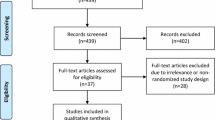Abstract
Background
Hypertrophic pyloric stenosis (HPS) is one of the most common pediatric illnesses necessitating surgical intervention. Controversy remains over the optimal surgical approach between laparoscopic pyloromyotomy (LP) and open pyloromyotomy (OP). LP has gained acceptance for management of HPS in an era of expanding minimal access surgical approaches to pediatric conditions. Several studies suggest advantages of LP over OP; however, selection bias and small sample sizes remain a concern. This study compares the outcomes of LP versus OP using propensity score methods.
Methods
The 2013–2015 ACS NSQIP Pediatric PUF was queried for all infants undergoing pyloromyotomy. The trend in the proportion of infants undergoing LP was described and perioperative outcomes between the OP and LP cohorts were compared using propensity score weighted regression models.
Results
4847 infants were identified to have undergone surgical pyloromyotomy. The proportion of LP performed increased significantly from 59% in 2013 to 65.5% in 2015 (p < 0.001). LP was associated with lower overall complications (1.4% vs 2.9%) (ORadj 0.52, 95% CI 0.34–0.80), surgical site-related complications (1.1% vs 2.1%) (ORadj 0.52, 95% CI 0.32–0.84), and post-operative length of stay (1.5 days vs 1.9 days) (ORadj 0.89, 95% CI 0.81–0.98) without significant differences in related re-operation (0.9% vs 0.9%) (ORadj 1.01, 95% CI 0.52–1.93) or readmissions (1.4% vs 2.1%) (ORadj 0.73, 95% CI 0.46–1.17).
Conclusions
Our study demonstrates that LP is increasingly utilized for management of hypertrophic pyloric stenosis and is associated with shorter length of stay, and lower odds of surgical site-specific and overall complications without differences in related re-operations. This study supports LP as a safe and effective method for management of HPS.

Similar content being viewed by others
References
Krogh C, Fischer TK, Skotte L, Biggar RJ, Øyen N, Skytthe A, Goertz S, Christensen K, Wohlfahrt J, Melbye M (2010) Familial aggregation and heritability of pyloric stenosis. J Am Med Assoc 303:2393–2399. https://doi.org/10.1001/jama.2010.784
Chung E (2008) Infantile hypertrophic pyloric stenosis: genes and environment. Arch Dis Child 93:1003–1004. https://doi.org/10.1136/adc.2008.141499
Ramstedt C (1912) Zur operation der angeborenen pylorus-stenose. Med klin
Alain JL, Grousseau D, Terrier G (1991) Extramucosal pyloromyotomy by laparoscopy. Surg Endosc 5:174–175
Sathya C, Wayne C, Gotsch A, Vincent J, Sullivan KJ, Nasr A (2017) Laparoscopic versus open pyloromyotomy in infants: a systematic review and meta-analysis. Pediatr Surg Int 33:325–333. https://doi.org/10.1007/s00383-016-4030-y
Oomen MWN, Hoekstra LT, Bakx R, Ubbink DT, Heij HA (2012) Open versus laparoscopic pyloromyotomy for hypertrophic pyloric stenosis: a systematic review and meta-analysis focusing on major complications. Surg Endosc 26:2104–2110. https://doi.org/10.1007/s00464-012-2174-y
Sola JE, Neville HL (2009) Laparoscopic vs open pyloromyotomy: a systematic review and meta-analysis. J Pediatr Surg 44:1631–1637. https://doi.org/10.1016/j.jpedsurg.2009.04.001
Jia W-Q, Tian J-H, Yang K-H, Ma B, Liu Y-L, Zhang P, Li R-J, Jia R-H (2011) Open versus laparoscopic pyloromyotomy for pyloric stenosis: a meta-analysis of randomized controlled trials. Eur J Pediatr Surg 21:77–81. https://doi.org/10.1055/s-0030-1261926
Leclair M-D, Plattner V, Mirallie E, Lejus C, Nguyen J-M, Podevin G, Heloury Y (2007) Laparoscopic pyloromyotomy for hypertrophic pyloric stenosis: a prospective, randomized controlled trial. J Pediatr Surg 42:692–698. https://doi.org/10.1016/j.jpedsurg.2006.12.016
Hall NJ, Pacilli M, Eaton S, Reblock K, Gaines BA, Pastor A, Langer JC, Koivusalo AI, Pakarinen MP, Stroedter L, Beyerlein S, Haddad M, Clarke S, Ford H, Pierro A (2009) Recovery after open versus laparoscopic pyloromyotomy for pyloric stenosis: a double-blind multicentre randomised controlled trial. Lancet 373:390–398. https://doi.org/10.1016/S0140-6736(09)60006-4
St Peter SD, Holcomb GW, Calkins CM, Murphy JP, Andrews WS, Sharp RJ, Snyder CL, Ostlie DJ (2006) Open versus laparoscopic pyloromyotomy for pyloric stenosis: a prospective, randomized trial. Ann Surg 244:363–370. https://doi.org/10.1097/01.sla.0000234647.03466.27
Ednie AC, Amram O, Schuurman N, Yanchar NL (2017) Comparing pyloromyotomy outcomes across Canada. J Pediatr Surg 52:739–743. https://doi.org/10.1016/j.jpedsurg.2017.01.021
Ceccanti S, Mele E, Frediani S, Morgante D, Iaconelli R, Almenrader N, Passariello M, Cozzi DA (2013) Moving toward laparoscopic pyloromyotomy: an initial Italian experience and national survey. Am Surg 79:955–958
Friedman J (2001) Greedy function approximation: a gradient boosting machine. Ann Stat
Efron B, Hastie T, Johnstone I (2004) Least angle regression. Ann Stat
McCaffrey D, Ridgeway G, Morral A (2004) Propensity score estimation with boosted regression for evaluating causal effects in observational studies. Psychol Methods
van der Bilt JDW, Kramer WLM, van der Zee DC, Bax NMA (2004) Laparoscopic pyloromyotomy for hypertrophic pyloric stenosis: impact of experience on the results in 182 cases. Surg Endosc 18:907–909. https://doi.org/10.1007/s00464-003-9075-z
Carrington EV, Hall NJ, Pacilli M, Drake DP, Curry JI, Kiely EM, De Coppi P, Pierro A, Eaton S (2012) Cost-effectiveness of laparoscopic versus open pyloromyotomy. J Surg Res 178:315–320. https://doi.org/10.1016/j.jss.2012.01.031
St. Peter SD, Acher CW, Shah SR, Sharp SW, Ostlie DJ (2016) Parental and volunteer perception of pyloromyotomy scars: comparing laparoscopic, open, and nonsurgical volunteers. J Laparoendosc Adv Surg Tech 26:305–308. https://doi.org/10.1089/lap.2015.0566
Anderson SA, Beierle EA, Chen MK (2014) Role of laparoscopy in the prevention and in the treatment of adhesions. Semin Pediatr Surg 23:353–356. https://doi.org/10.1053/j.sempedsurg.2014.06.007
Research C DE and Drug Safety and Availability - FDA Drug Safety Communication: FDA review results in new warnings about using general anesthetics and sedation drugs in young children and pregnant women
American College of Surgeons (2016) User guide for the 2015 ACS NSQIP Pediatric procedure targeted participant use data file (PUF) American College of Surgeons National Surgical Quality Improvement Program-Pediatric
Rubin DB (1997) Estimating causal effects from large data sets using propensity scores. Ann Intern Med 127:757. https://doi.org/10.7326/0003-4819-127-8_Part_2-199710151-00064
Author information
Authors and Affiliations
Corresponding author
Ethics declarations
Disclosures
Drs. Kethman, Harris, Hawn, and Wall have no conflicts of interest or financial ties to disclose.
Rights and permissions
About this article
Cite this article
Kethman, W.C., Harris, A.H.S., Hawn, M.T. et al. Trends and surgical outcomes of laparoscopic versus open pyloromyotomy. Surg Endosc 32, 3380–3385 (2018). https://doi.org/10.1007/s00464-018-6060-0
Received:
Accepted:
Published:
Issue Date:
DOI: https://doi.org/10.1007/s00464-018-6060-0




